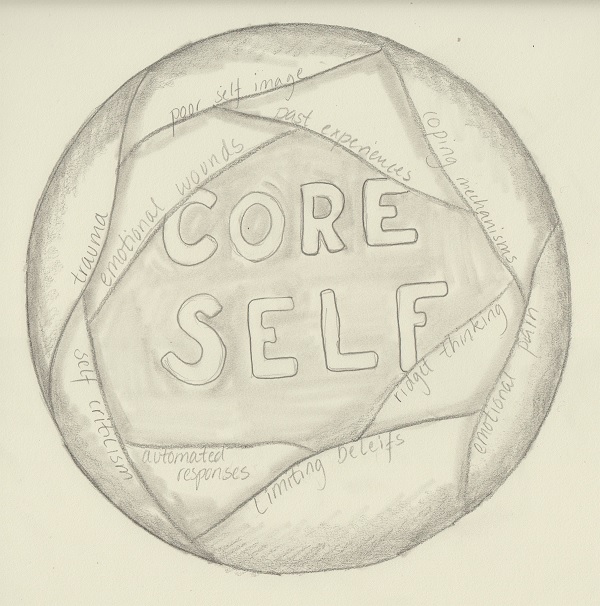A Coaching Model Created by Merete Mace
(Trauma Recovery Coach, UNITED STATES)
Wholeness is not achieved by cutting off a portion of one’s being, but by the integration of the contraries.1
My model is not a progression of the coaching relationship or session itself, rather a shift in understanding and the basis for the coaching. As such while it doesn’t guide the cycle of the sessions, it guides the process, the movement and the outcome by challenging the usual starting point.
I work with people who have experienced different forms of trauma. Whether it’s the loss of their marriage or growing up in an abusive environment, all trauma changes an individual. The person might have a sense that they are out of sorts, or they might recognize that they carry with them the effects of a traumatic upbringing. For both is true that their original way of being has been affected by the trauma.
Many people who have experienced trauma, have gone through therapy and some have diagnoses attached to them. Based on the trauma itself and the treatment that followed, it’s easy for a person to conclude something is wrong with them or that they are broken somehow.
The language around trauma is in it self supporting this pathological understanding: disorder, treatment, diagnosis, the list goes on.
It’s such a defeating starting point for an individual.
I work from a different starting point.
People who have been through trauma often have lived through and survived unthinkable situations, and yet here they are. I want to honour and respect that individual for their strength, for their will to live and their ability to keep going in spite.
I want to create a shift in the understanding of being a survivor of trauma.
The truth is that the client is not broken and there’s nothing wrong with them. The client’s inner core is complete.
Yes, there might be layers and layers of pain, wounds, wrong thinking, unhelpful responses, coping mechanisms, limiting beliefs and past experiences that overshadow the client’s core, but their core-self is still there.
Same layers might serve the client in a different way, protect the client or help the client cope. Some layers might have served a purpose at a point, but are not helpful currently.
My starting point becomes that the client is fully capable and have the ability and power to sort through everything.

Application
I am fully aware that most clients will not share my starting point, to begin with, and that it will be a challenging hypothesis for most. It stands in sharp contrast to the helplessness that many trauma survivors and learned and live in.
This shift in thinking is so important. It’s a non-pathological approach. The client’s disorder is an injury, the client’s diagnosis is an addition, the client’s unhelpful reactions are emotional wounds and the client’s addiction is a coping skill. But under it, all is the intact core-self and this can be uncovered.
The client doesn’t need fixing, the client needs uncovering. Injuries can be tended to, wounds can be healed and coping skills can be evaluated and changed if necessary. This gives an individual back their power and responsibility.
This shift in understanding is not an easy one, but fundamental to the movement toward trauma mastery, autonomy and the life the client desires. And my job as a coach becomes this:

1 Carl Gustav Jung